A design can really come to life when it is printed. With the printing techniques which are available today, it could be argued that there has never been more options in terms of print finishes.
The video included below shows issue #223 of Computer Arts. The cover was “finished firstly with a gloss spot UV on the main image of the design. It then went on to the next process which includes a Photochromic ink, a special screen process that is cured and when exposed to UV light (i.e. sunshine) the ink changes colour from invisible to a bright purple! The final touches also include a purple foil on the ‘Design Matters’ logo at the header of the page.”
Yep, that’s right. Ink which becomes visible when sunlight hits it. Amazing.
I was already aware of certain processes such as:
Embossing
Debossing
Cutting
Creasing
Foiling
Laminating
Varnishing
The Celloglas website also boasts, what it calls, ‘Special Effect Finishes’. Including the aforementioned photochromatic ink they also list some pretty special techniques. The ones that stand out to me are glow in the dark ink, ink effected by heat, ink that smells like fruit and ink that gives the appearence of movement.
There has got to be a way that I can include an exciting an innovative print finishing technique in my final design which will truly engage the reader.
Editing and Designing
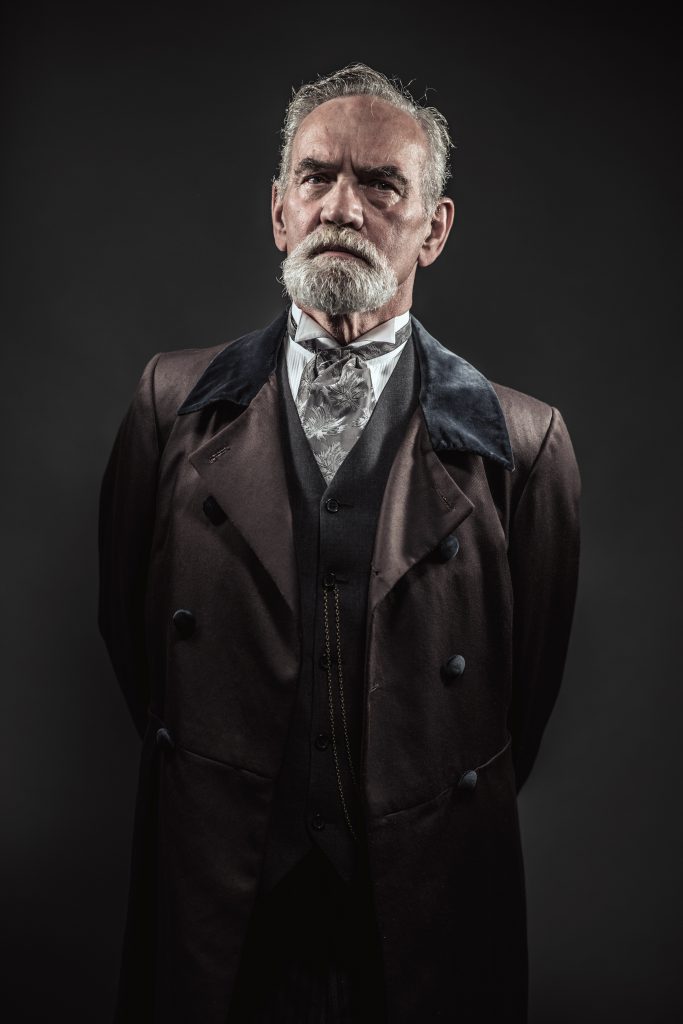
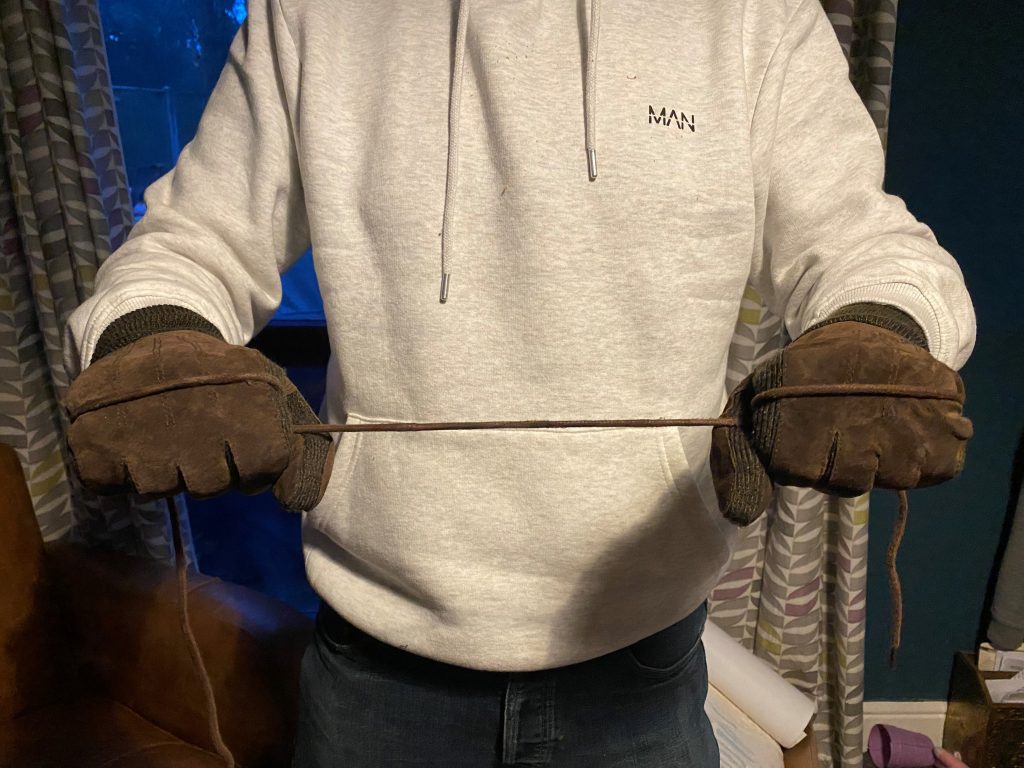
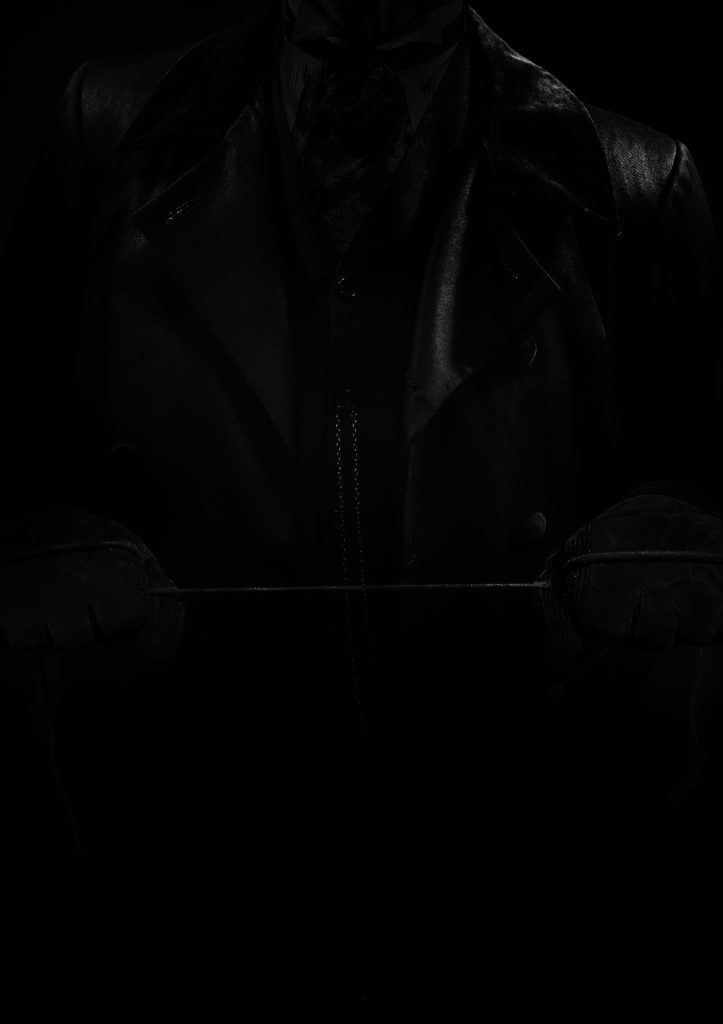
I wanted to create a background to my design which followed the themes of the moodboard. Dark, Victorian and slightly ominous.
Step one – I found an image of a man who was dressed in the correct clothes for the time period.
Step two – I took a picture of myself wearing leather glothes and a bootlace strung between my hands.
Step three – I combined these two images and made them barely visible on a black background. I obscured the face of the man so that it correlated with the theme of, ‘Who was the Bootlace Killer?’
I am extremely pleased with how this poster turned out. The hands look part of the piece and it really feels like it could be an image of the murderer.
I applied the copy of my essay in a very dark colour so it was barely visible to the human eye. From my previous reseach into print finishing, I deceided to use a type of UV ink which would only show up when a certain light was shone upon it. I liked this idea as it felt like the viewer would then be revealing the story, its facts and questions it poses.
Newspaper Supplement
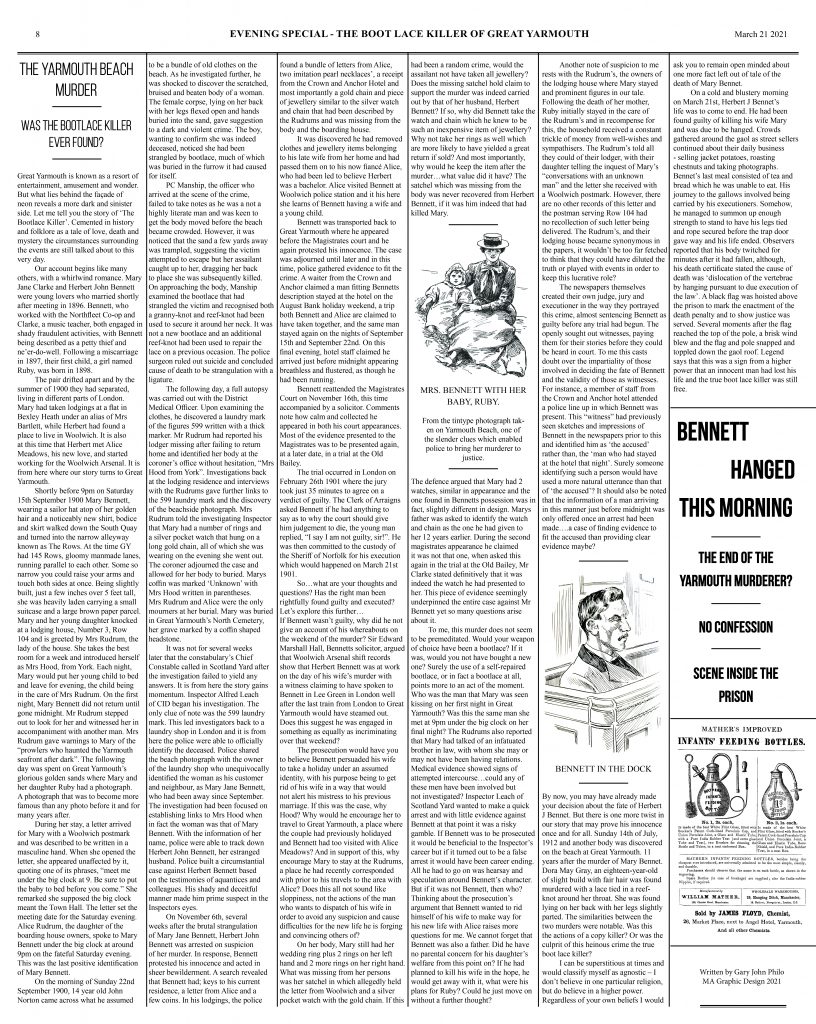
In addition to the poster, I wanted to createan easy read version where the reader could consume the information at their own pace. I took examples of from newspapers printed at the time and inserted my essay into an article format.
I used illustrations from these newspapers and adverts from the time to enhance to overall feeling that the paper was genuinly from that time.
Newspapers did not use photographs in mass print during the early 1900s as it would cost too much to reproduce. Instead, they opted for illustrative pieces and court sketches to provid a visual commentary.
I needed a way to combine both the interactivity of the poster and the easy read option of the newspaper.
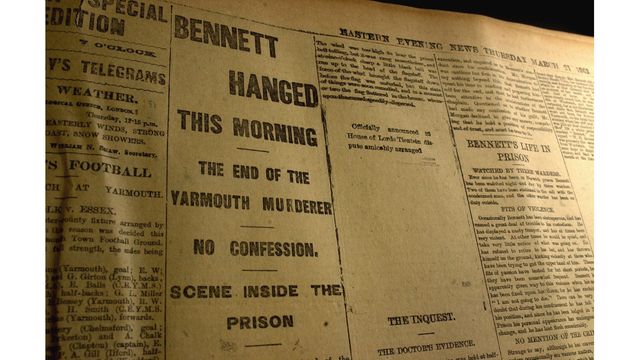
Installation
I decided on creating a speculative installation design. My idea was to install this wooden poster holder at the same location of the murder of Mary Bennett.
During the day it would be hard to make out the UV text and viewers would have the option to take a newpaper with the article.
At night the experience would come to life. Can you imagine reading about an unsolved beach murder at the same location of one committed more than 100 years ago?
Isolated, with your back to the world, all you would have to guide you through the text is a small ultra violet lamp.
I tried to keep everything as ‘Victorian’ as possible but could not get passed the use of the UV lamp and its ‘uncovering’ properties.
I did think about having candles and ink effected by heat – but the beach wind, vandalism and the amount of heat needed ended this thought.
Perhaps, thinking about it now, I could have combined the two and had a UV lamp which took the form of a candle in its holder?
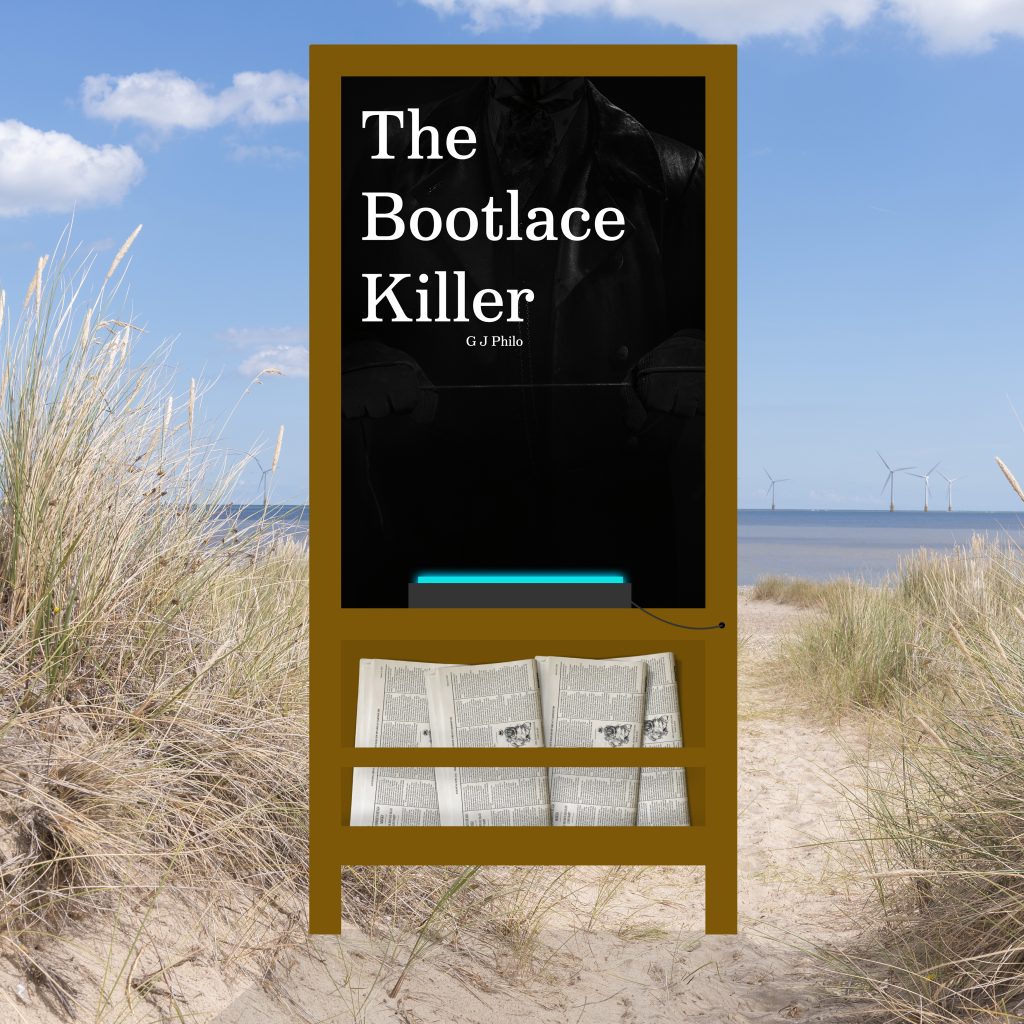
References
Youtube.com. 2014. How CA’s light-reactive photochromatic cover was made. [online] Available at: https://www.youtube.com/watch?v=j7x2mLHnXlU [Accessed 14 May 2021].
Celloglas. 2021. Celloglas | The UK’s Leading Print Finishers. [online] Available at: https://www.celloglas.co.uk/ [Accessed 14 May 2021].
Capon, P., 1965. The Great Yarmouth mystery. London: G.G. Harrap.
Briggs, S., 2021. Who was behind Norfolk’s ‘bootlace murders’?. [online] Eastern Daily Press. Available at: https://www.edp24.co.uk/news/when-were-the-bootlace-murders-in-great-yarmouth-7822686 [Accessed 14 May 2021].
Blanco, J., n.d. Herbert John Bennett | Murderpedia, the encyclopedia of murderers. [online] Murderpedia.org. Available at: https://murderpedia.org/male.B/b/bennett-herbert.htm [Accessed 14 May 2021].
Archives.norfolk.gov.uk. n.d. Crimes and trials in Great Yarmouth – Archives. [online] Available at: https://www.archives.norfolk.gov.uk/help-with-your-research/crime-and-punishment/crimes-and-trials-in-great-yarmouth [Accessed 14 May 2021].
British Executions. n.d. British Executions – Herbert John Bennett – 1901. [online] Available at: http://www.britishexecutions.co.uk/execution-content.php?key=66&termRef=Herbert%20John%20Bennett [Accessed 14 May 2021].
Britishnewspaperarchive.co.uk. 2021. Results for ‘herbert bennett hanged’ | British Newspaper Archive. [online] Available at: https://www.britishnewspaperarchive.co.uk/search/results?basicsearch=herbert%20bennett%20hanged&retrievecountrycounts=false [Accessed 14 May 2021].
Strangeco.blogspot.com. 2018. A Tale of Two Murders. [online] Available at: http://strangeco.blogspot.com/2018/07/a-tale-of-two-murders.html [Accessed 14 May 2021].

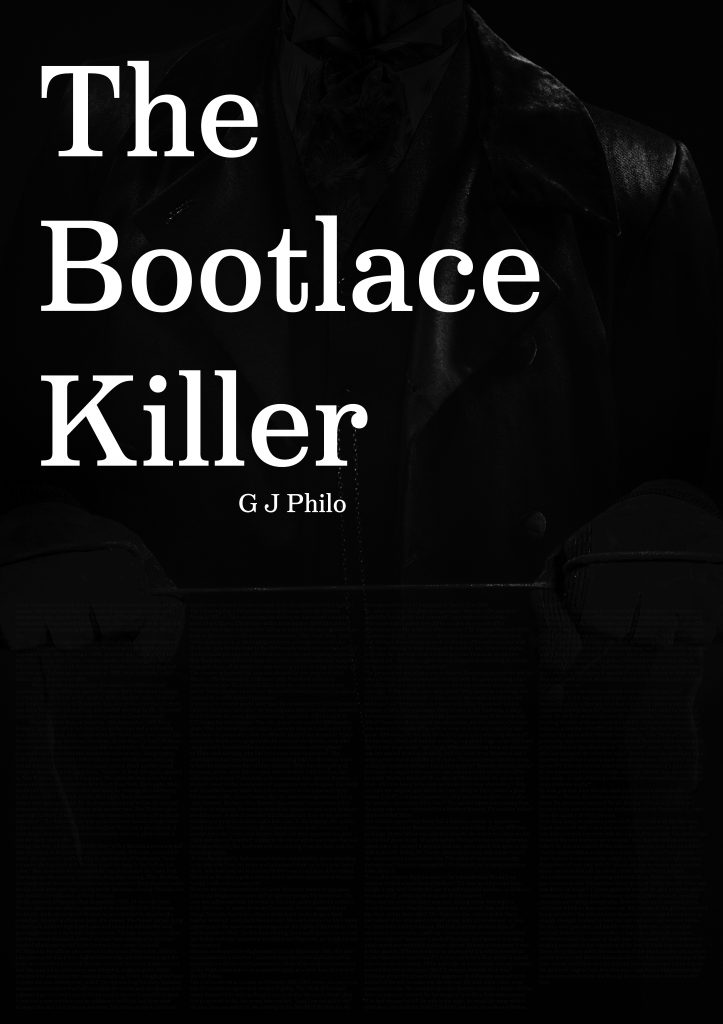

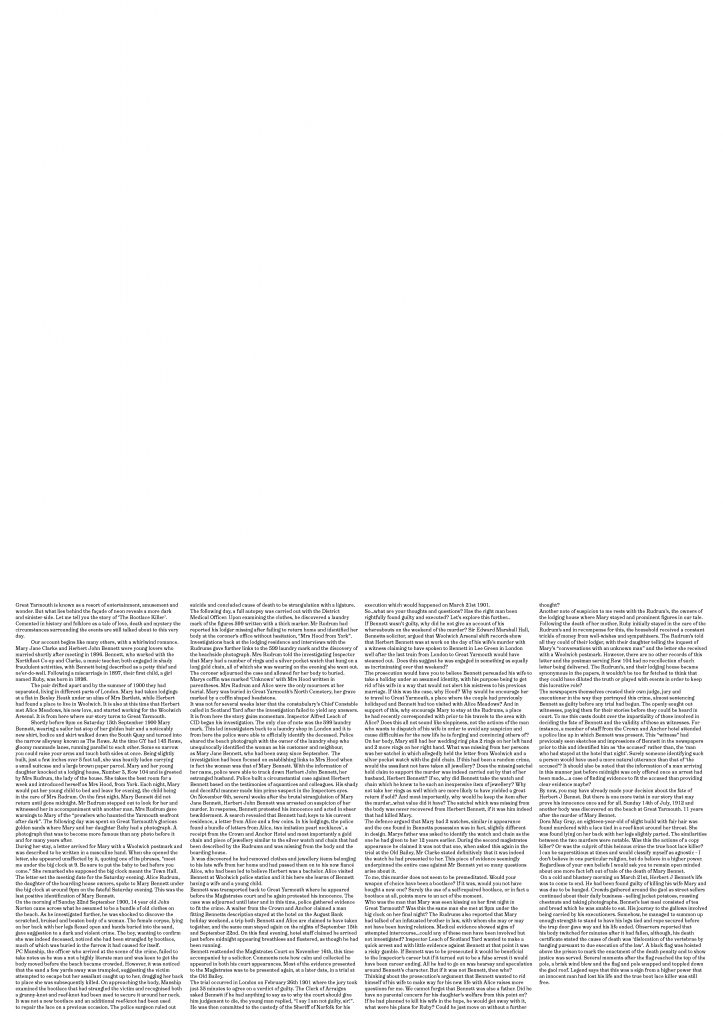
Leave a Reply